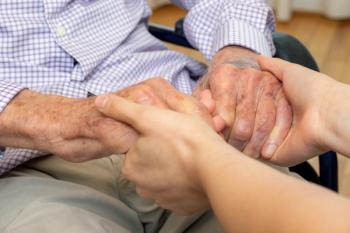
Tulsa medical office shooting shows health systems must be prepared
Four people were killed in the Oklahoma medical center, and another deadly shooting took place in an Ohio hospital on the same day. Healthcare leaders need to have strong policies to protect patients and staff.
The killing of four people at a medical office in Oklahoma stunned the nation, and healthcare leaders need to understand one painful fact.
It could happen at any hospital or health system. Healthcare leaders need to be very cognizant of that fact as they think about ways to protect their patients and staff, said Brine Hamilton, president of the
“Don't take for granted these things couldn’t happen at your facility,” Hamilton said in a phone interview with Chief Healthcare Executive.
The gunman sought to kill his surgeon because he was upset with the pain he was experiencing following a recent back operation, authorities said, according to reporting by the
The attack took place Wednesday on the campus of the Saint Francis Health System in Tulsa, Okla. The surgeon who was the intended target, Dr. Preston Phillips, died in the attack. The gunman killed another physician, Dr. Stephanie Husen, receptionist Amanda Glenn and a patient, William Love, authorities said.
The shooter took his own life, authorities said. Police identified the shooter as Michael Louis, 45, of Muskogee, Oklahoma. He used an AR-style rifle, which he purchased hours before the attack, police said.
The Tulsa tragedy occurred on the same day as another fatal shooting at an Ohio hospital.
Authorities said a prison inmate being treated at Miami Valley Hospital wrestled a gun away from a security guard and fatally shot the guard, the
Authorities identified the guard as Darrell Holderman, 78, of Carlisle, Ohio, and the shooter was identified as Brian Booth, 30, of Miamisburg.
‘The big thing is training’
While mass shootings at health systems are rare, doctors, nurses and other healthcare workers are accustomed to dealing with violent situations. Healthcare workers are more likely to endure violence at the workplace than employees in any other industry.
Healthcare workers were the victims of 73% of all nonfatal workplace injuries in 2018,
Healthcare systems need to have strong policies and procedures to deal with violent situations, including active shooters, Hamilton said. But he said it’s not enough to have plans on the books.
Healthcare leaders need to make sure “drills are actually being conducted,” he said.
“The big thing is training,” Hamilton said. And he added, “Not just security staff but all staff.”
Drills and training should include the clinical teams, Hamilton said.
The training should be modified based on staff responsibilities. Staff working in behavioral health should get different training than those in palliative care, Hamilton said.
With drills on dealing with an active shooter, Hamilton suggested having local law enforcement officers participate in the training exercises.
Healthcare leaders should also develop good working relationships with their local law enforcement agencies, Hamilton said. “It shouldn’t be the first time you’re meeting law enforcement at an event like this,” he said.
Healthcare systems should also consider having multidisciplinary teams, including members of clinical and security staff, to address workforce violence and assess threats.
“Generally speaking, security and clinical have a different mindset when approaching these situations,” he said. “It fosters the opportunity for these different stakeholders to approach each other.”
Some hospitals are turning to wearable devices, such as small alarms that can be worn on a hospital employee’s identification badge. Hamilton said he is seeing more hospitals utilize those wearable alarms for workers.
For hospitals looking to improve their safety, Hamilton said they can consider metal detectors at certain entrances. He acknowledged they aren’t practical for every environment.
But they can detect firearms, knives or other potential threats.
“These aren’t going to solve every issue,” he said. But he added, “It is a measure that can be taken.”
Violence rising in the pandemic
While data isn’t yet available, some healthcare leaders say they have seen an increase in violent incidents during the COVID-19 pandemic.
While Hamilton cautions he’s speaking anecdotally, he said he’s had enough conversations with other security leaders in the healthcare sector to indicate that workplace violence has risen since the arrival of the COVID-19 pandemic.
“It seems to be a problem that has only gotten worse in the pandemic,” Hamilton said.
Some healthcare groups have been pushing
Sen. Tammy Baldwin, D-Wisc., has introduced
National Nurses United, the Emergency Nurses Association and the American College of Emergency Physicians have backed the legislation.
Even though most violence at work happens in the healthcare space, nurses and others say incidents are probably under-reported. Jennifer Schmitz, president of the Emergency Nurses Association, talked about the importance of nurses reporting violent incidents at a
“When we say 'No Silence on ED Violence,' it’s a call for more health care professionals to speak up about their experiences so that hospital leaders, law enforcement, prosecutors and legislators cannot ignore the chorus calling for change,” Schmitz said.
The Minnesota Hospital Association and Minnesota Medical Association issued a joint statement after the shootings.
“The hospital, health system, and physician community cannot and will not be silent as gun violence increasingly enters our places of healing, learning, and other community settings – these senseless acts of violence must be stopped,” the Minnesota groups said. “This is a public health crisis and must be addressed.”








































